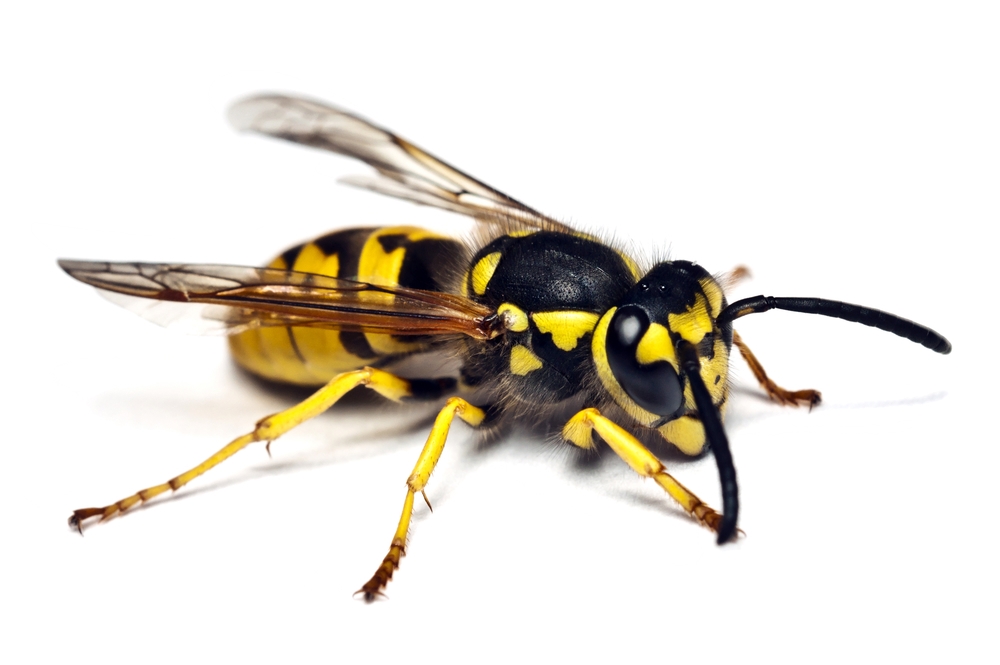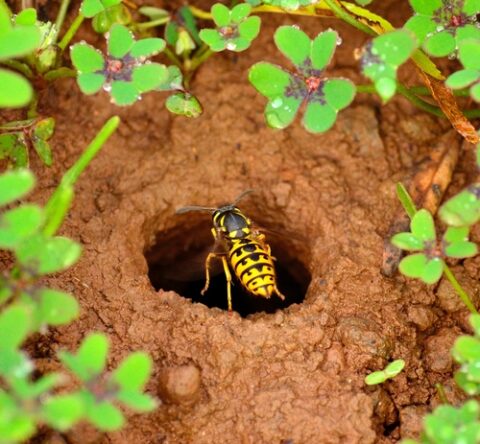Here are the risks of encountering a wasp and its nest.
Wasps are fierce guardians of their home and offspring. They are highly territorial and have zero hesitation about attacking anything or anyone that gets too close to their turf.
While some nests, like those of paper wasps, are built above ground and visible, others can be entirely hidden. Yellow jackets, for example, make their nests underground, where they are hard to spot until it’s too late. This poses a risk to playing children and curious pets.
Wasps are grouped into two categories: solitary or social. Social wasps will call in backup when provoked. If a single wasp is bothering you, swatting at it to make it go away seems natural. However, doing so might unleash a much bigger problem.
Social wasps release alarm pheromones when disturbed or threatened. This chemical signal is a rallying call for nearby wasps in the colony to band together and defend the nest. Facing a large, angry swarm poses a real danger.
- Allergic Reactions Are a Possibility. The sting’s pain is the least concerning for those who are allergic. While swelling at the sting site is expected, some people experience a severe whole-body allergic reaction called anaphylaxis. Symptoms include dizziness, trouble breathing, rapid heartbeat, confusion, wheezing, and potential loss of consciousness.
Anaphylaxis requires emergency medical treatment. Without an epinephrine auto-injector, it can be fatal. If this reaction occurs, call 911, use the injector if available, and try to remove the stinger.
What If a Wasp Lands on Me? If a wasp lands on you, resist the urge to brush or hit it away. Instead, stay very still, as the wasp may just fly off on its own if undisturbed. Swatting guarantees you’ll get stung. If it lingers, gently shoo it away with a piece of paper or a flat object.
Insect Sting Allergies Can Develop Over Time. It’s possible to become allergic to wasps or insect stings, even with no prior serious reaction. The first sting can sensitize the person’s immune system. Any future sting, even from a different insect, may then trigger allergic symptoms from mild to life-threatening. This underscores why dealing with wasps yourself is unwise.
Enough Stings Can Prove Deadly, Even Without Allergies
Whether allergic or not, sustaining a high number of wasp stings can be fatal, according to the USDA. On average, a non-allergic person can safely withstand around 10 stings per pound of body weight.
While getting stung that many times at once is unlikely, the threat exists – especially if provoking a nest. A single wasp can sting repeatedly, so an encounter with just a few hundred can be lethal.
2. Wasps Don’t “Buzz Off” Once Angered
While solitary wasps rarely bother people, social wasps can relentlessly pursue a target (or targets) once aggravated. Their aggression overpowers any fear of getting swatted. If facing a swarm, the best defense is fleeing to shelter immediately.
- DIY Wasp Nest Removal Is Extremely Risky Any attempts at do-it-yourself nest eradication are unlikely to eliminate every last wasp. You might kill most of the hive only to get attacked by the enraged survivors, who may later rebuild right where you started.
Besides provoking the nest, DIY removal has other significant hazards. Spraying high nests can cause poison to fall back on you. Using a ladder raises the risk of dangerous falls if wasps attack. The safest approach is to leave it to professional wasp removal experts.


